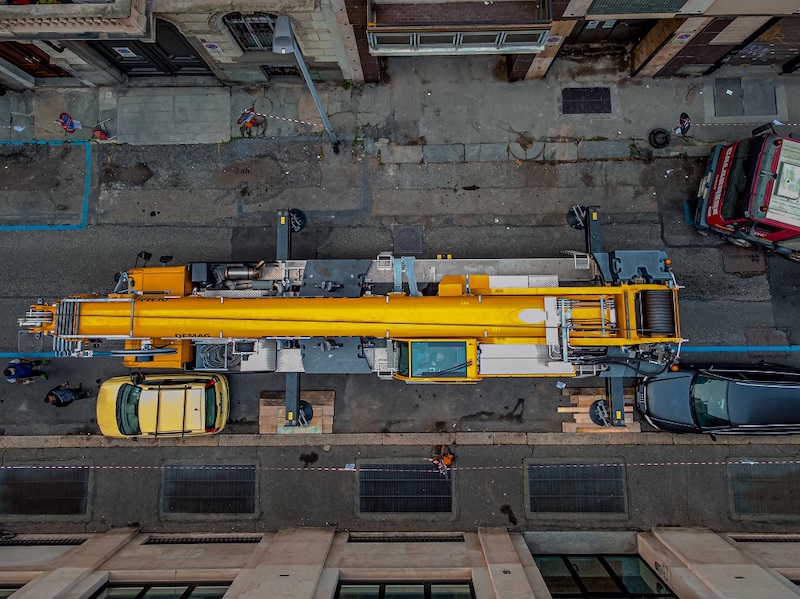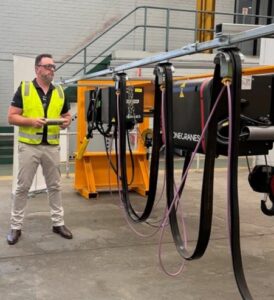Calabrese Autogru S.r.l., a company that specializes in heavy lifting relied on a Demag® AC 160-5 all-terrain crane to lift a heat exchanger in the middle of Turin in Italy. “To be perfectly honest, we didn’t even consider anything but the AC 160-5 for this project. I simply don’t know of any other model in this class that could have done a better job of handling the tight space constraints at the site,” said Managing Director Alessandro Calabrese. Accessing the worksite proved to be challenging: despite parking being prohibited, several vehicles were parked along the access road, reducing the effective width of the road to less than three meters. The Demag AC 160-5 with its width of only 2.75 meters was able to maneuver in between the parked vehicles and get to its destination.

DCIM\100MEDIA\DJI_0627.JPG 
DCIM\100MEDIA\DJI_0616.JPG 
DCIM\100MEDIA\DJI_0631.JPG
Once on site, thanks to its 68-meter telescopic boom, it was able to perform the lift immediately, without the need to attach an extension. “In that narrow road, setting up a main boom extension would have been both time-consuming and logistically challenging, and that would have resulted in significant extra costs. The AC 160-5 saved us from having to go down that route,” said Alessandro Calabrese. At that point, the crane was ready to lift the 7.2-tonne heat exchanger without any further difficulties but instead, one more obstacle common to urban projects awaited the Calabrese team: “The hook block and slinging gear added one tonne to the weight of the load, which meant that our AC 160-5 had to lift a total of 8.2 tonnes,” explained Alessandro Calabrese. Under normal circumstances, this would not have been a problem for a machine in this class, but in the narrow Turin street, things were a bit different: the parked cars made it challenging for the AC 160-5 to extend its outriggers. The sidewalk could not be used as a support either, as it did not have enough load capacity to support the pressure from the outriggers due to underground cavities. “This meant that we were only able to extend the outriggers to a limited degree and in an asymmetrical configuration. However, we were able to go ahead with the lift thanks to the IC-1 Plus crane control system, which precisely determined the maximum possible load, taking all relevant factors into account before giving us the green light,” Alessandro Calabrese explained.
This enabled the Demag AC 160-5 to smoothly lift the 7.2-tonne heat exchanger through a radius of 19 meters with the telescopic boom fully extended, and bring it to a height of 35 meters before setting it down at its intended location









